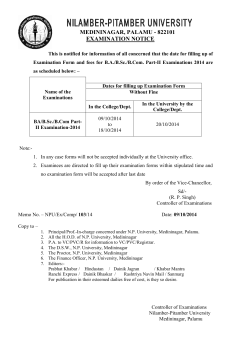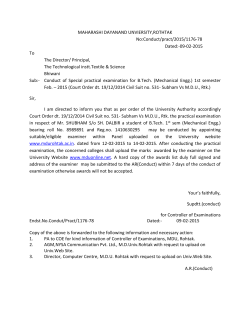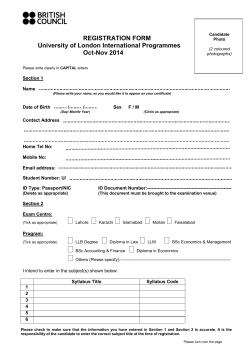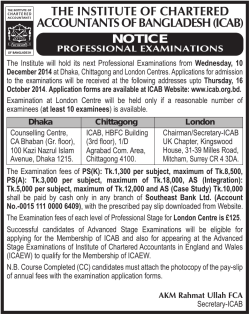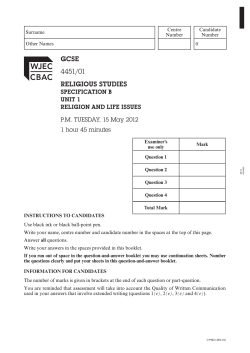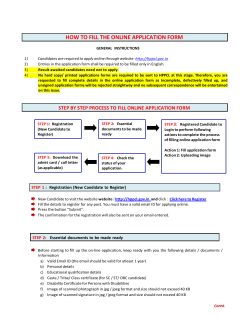
How to Improve the Viva Voce: Some Guidelines
Volume 2, Issue 3, Sept. 2009 Alert Bulletin How to Improve the Viva Voce: Some Guidelines Dr. Prakash Baral Lecturer, Department of Anatomy. MCOMS, Pokhara Email address:prakashbaral2002@gmail.com Since very long time back, orals or viva voce is one of the important methods to evaluate the knowledge of students in various examinations. The objective of oral examination is to test whether the students have understood the subject really or not: how much does the student have expression power: how much is he artful or skillful in presenting the answer he knows etc. The viva marks in university examination is different in different universities. The sad point of oral examination is private colleges are abusing it to make large number of students pass in examinations. Majority of questions in medical oral examinations are of recall type which can be assessed more reliably by objective written tests. The advantage and disadvantages of oral examinations are listed below: The advantages of viva voce are: 1. It provides a unique opportunity for a face to face interaction between the student and the examiner to test the interactive skills which can not be assessed by any other method of evaluation. 2. It gives flexibility to the examiner to move from strong to weak areas and vice versa. 3. It permits the examiner to give hints to elicit the desired responses and memory blocks can be cleared. 4. If properly designed and conducted a wide coverage of the subject area is possible. 5. It also provides an opportunity for discussion. 60 The drawbacks of traditional viva voce pattern are: 1. There is considerable wide range of variations of questions from student to student, thus some students may get easy questions other gets difficult questions. Since there is no uniformity there is personal bias. Research studies have shown that viva voce or oral examination has serious deficiencies interims of reliability. 2. There are numerous disadvantages which are counterproductive. These include the emotional state of the candidate. Viz. anxiety, tension, apprehension etc, inadequate standardization, insufficient objectivity and reproducibility of results. 3. another disadvantage is, the undue influence of irrelevant factors, wherein the personality of the student can produce a striking”halo”effect.A relaxed, fairly eloquent student may receive a rating far in excess of his true knowledge, while a very knowledgeable student who has difficulty in expressing himself may receive a rating much lower than his performance really warrants. The other common deficiencies of orals are leniency and central tendency wherein an examiner tends to rate the students around the pass mark. The questions are rarely prepared in detail beforehand, but are posed extemporaneously as the examiner is prompted by the student’s responses. With these limitations, it is desirable that the dependency on oral examination be considerably reduced. Baral P. Journal of GMC-Nepal It should not be used alone to determine the ultimate passing or failing, or mastery of any subject. However, orals may be appropriate when one wishes to discriminate among the top students where higher intellectual skills could be challenged by an in depth questioning. Guidelines for examinations: improvement of Oral To make the oral examination more meaningful, a few guidelines are given below: (A)Abate candidate’s anxiety: 1) To lessen the candidate’s anxiety students should be put at ease before the viva begins. Students are exercised in practice by conducting viva several times in internal examination. 2) It is better if the examiner interact with the candidates in group before viva begins. 3) The questions to be asked can be written in card and the card be given to students so that he/she can think over it while he awaits for his turn. (B)Examiner behavior: 1) Be helpful and friendly thought the testing period. 2) When the student gives correct answers to your questions, reward him by appropriate words or gestures. 3) If the student does not answer a question, give him clues if necessary. 4) When he makes a blunder, never make fun of him. Baral P. 5) Do not persist with the same content area if the candidate is obviously ignorant change the subject. 6) When the candidate gives an answer with which you do not agree, do not bluntly contradict him. Ask for reasons. Give credit to views expressed in standard book, journals and by other experts. 7) Do not interrupt a candidate unnecessarily. 8) At the close of the examination, send him out with a polite remark. ( C) Way of asking: 1) Start with a simple question. 2) Raise the standard of questions gradually to a level which is considered as ‘minimum acceptable competence’. 3) Questions should cover a wide area to ensure proper sampling. 4) Include some questions which would test his understanding/comprehension of the subject matter and his ability to apply it to problem situations. 5) Decide beforehand, the number and nature of questions, and also the expected answers and their marks. 6) Once the candidate has satisfied the minimum requirements for a pass by answering questions in the ‘essential area’, test him at a higher level (‘nice-to-know’ variety) to give higher grades. 7) Develop a checklist of questions which can be used for each candidate. 61
© Copyright 2025



